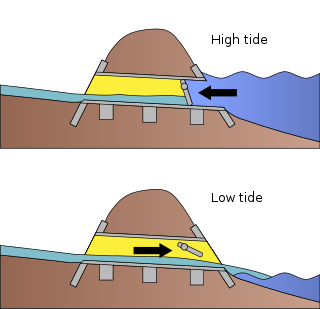 W
WAboiteau farming on reclaimed marshland is a labor-intensive method in which earthen dikes are constructed to stop high tides from inundating marshland.
 W
WAn andén, Spanish for "platform", is a stair-step like terrace dug into the slope of a hillside for agricultural purposes. The term is most often used to refer to the terraces built by pre-Columbian cultures in the Andes mountains of South America. Andenes had several functions, the most important of which was to increase the amount of cultivatable land available to farmers by leveling a planting area for crops. The best known examples of andenes are in Peru, especially in the Sacred Valley near the Inca capital of Cuzco and in the Colca Canyon. Many andenes have survived for more than 500 years and are still in use by farmers throughout the region.
 W
WThe breadbasket of a country or of a region is an area which, because of the richness of the soil and/or advantageous climate, produces large quantities of wheat or other grain. Rice bowl is a similar term used to refer to Southeast Asia; and California's Salinas Valley is sometimes referred to as the world's salad bowl. Such regions may be the subject of fierce political disputes which may even escalate into full military conflicts.
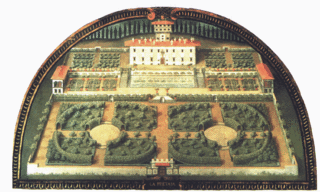 W
WBustan is an agricultural garden—a farm near the house which includes fruit trees, vegetable seedlings, shrubs, and spices. The word in Persian means "a place of smell" in English. Use of the word probably began during the Muslim empire and is equivalent to use the words gene and pardes in Jewish sources. Orchard was built usually near water, so common in the Middle East is characterized by a minority of rainfall.
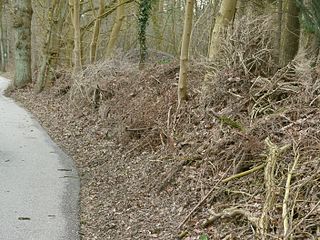 W
WA dead hedge is a barrier constructed from cut branches, saplings, and foliage. The material can be gathered from activities such as pruning or clearing, and in traditional forms of woodland management, such as coppicing. Its ecological succession can be a beetle bank or hedge.
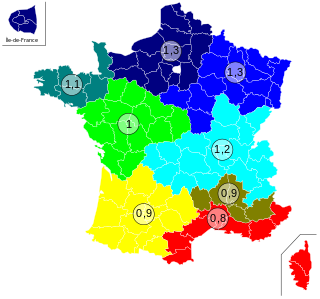 W
WA degree day is a measure of heating or cooling. Total degree days from an appropriate starting date are used to plan the planting of crops and management of pests and pest control timing. Weekly or monthly degree-day figures may also be used within an energy monitoring and targeting scheme to monitor the heating and cooling costs of climate controlled buildings, while annual figures can be used for estimating future costs.
 W
WHilling, earthing up or ridging is the technique in agriculture and horticulture of piling soil up around the base of a plant. It can be done by hand, or with powered machinery, typically a tractor attachment.
 W
WFertigation is the injection of fertilizers, used for soil amendments, water amendments and other water-soluble products into an irrigation system.
 W
WA season is a division of the year marked by changes in weather, ecology, and the amount of daylight. The growing season is that portion of the year in which local conditions permit normal plant growth. While each plant or crop has a specific growing season that depends on its genetic adaptation, growing seasons can generally be grouped into macro-environmental classes.
 W
WA hardiness zone is a geographic area defined to encompass a certain range of climatic conditions relevant to plant growth and survival.
 W
WHay bucking, or "bucking hay", is a type of manual labor where rectangular hay bales, ranging in weight from about 50 to 150 pounds, are stacked by hand in a field, in a storage area such as a barn, or stacked on a vehicle for transportation, such as a flatbed trailer or semi truck for delivery to where the hay is needed. The act of throwing the bales up to a higher level is called "bucking". The work is very strenuous and physically demanding, and is dependent upon using a proper technique in order to not become fatigued and avoid injury.
 W
WA Headland, in agriculture, is the area at each end of a planted field. In some areas of the United States, this area is known as the Turnrow. It is used for turning around with farm implements during field operations and is the first area to be harvested to minimize crop damage. The rows run perpendicular to the lay of the field and are usually two, three or four times the width of the implement used for planting the field.
 W
WHilling, earthing up or ridging is the technique in agriculture and horticulture of piling soil up around the base of a plant. It can be done by hand, or with powered machinery, typically a tractor attachment.
 W
WHorse trading, in its literal sense, is the buying and selling of horses, also called "horse dealing". Due to the difficulties in evaluating the merits of a horse offered for sale, the sale of horses offered great opportunities for dishonesty, leading to use of the term horse trading to refer to complex bargaining or other transactions, such as political vote trading. It was expected that horse sellers would capitalize on these opportunities and so those who dealt in horses gained a reputation for underhanded business practices.
 W
WHydroseeding is a planting process that uses a slurry of seed and mulch. It is often used as an erosion control technique on construction sites, as an alternative to the traditional process of broadcasting or sowing dry seed.
 W
WIn agriculture, monoculture is the practice of growing one crop species in a field at a time. Monoculture is widely used both in intensive farming and in organic farming: a 1,000-acre cornfield and a 1-hectare field of organic kale are both monocultures. It has allowed farmers to increase efficiency in planting, managing, and harvesting, but it can also increase the risk of diseases or pest outbreaks. Polyculture, where more than one crop species is growing in the same space at the same time, is the alternative to monoculture.
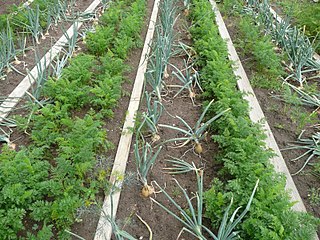 W
WPolyculture is a form of agriculture in which more than one species is grown at the same time and place in imitation of the diversity of natural ecosystems. Polyculture is the opposite of monoculture, in which only members of one plant or animal species are cultivated together. Polyculture has traditionally been the most prevalent form of agriculture in most parts of the world and is growing in popularity today due to its environmental and health benefits. There are many types of polyculture including annual polycultures such as intercropping and cover cropping, permaculture, and integrated aquaculture. Polyculture is advantageous because of its ability to control pests, weeds, and disease without major chemical inputs. As such, polyculture is considered a sustainable form of agriculture. However, issues with crop yield and biological competition have caused many modern major industrial food producers to continue to rely on monoculture instead.
 W
WPuddling is the tillage of rice paddies while flooded, an ancient practice that is used to prepare for rice cultivation. Historically, this has been accomplished by dragging a weighted harrow across a flooded paddy field behind a buffalo or ox, and is now accomplished using mechanized approaches, often using a walking tractor.
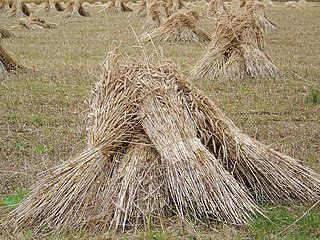 W
WA sheaf (/ʃiːf/) is a bunch of cereal-crop stems bound together after reaping, traditionally by sickle, later by scythe or, after its introduction in 1872, by a mechanical reaper-binder.
 W
WA smother crop is a thick, rapidly growing crop that is used to suppress or stop the growth of weeds. Smother crops have better root systems that help them compete with weeds for water, and as a result the root systems of weeds get weak. Meanwhile, the dense top growth of the smother crop suppresses the top growth of weeds. Effectively, smother crops successfully compete with weeds for vital resources and inhibit their germination and growth. Once the smother crop has served its purpose, it is ploughed under along with the weakened weeds, thus providing green fertilizer. A good smother crop must compete strongly with weeds but minimally with the crop. Smother crops reduce dependence on chemical weed control, and are sometimes used in the transition to organic farming.
 W
WA clamp is a compact heap, mound or pile of materials. A storage clamp is used in the agricultural industry for temporary storage of root crops such as potato, turnip, rutabaga, mangelwurzel, and sugar beet.
 W
WA swathe or swath is the width of a scythe stroke or a mowing-machine blade, the path of this width made in mowing or the mown grass or grain lying on such a path. The mower with a scythe moves along the mowing-edge with the uncut grass to the right and the cut grass laid in a neat row to the left, on the previously mown land. The swathe width depends on the blade length, the nature of the crop and the mower but is usually about 1.5 metres wide. Mowing may be done by a team of mowers, usually starting at the edges of a meadow then proceeding clockwise leaving a series of staggered swathes and finishing in the middle.
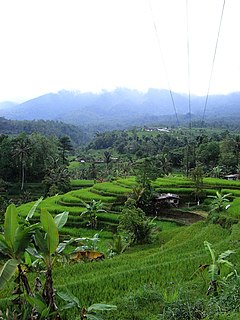 W
WIn agriculture, a terrace is a piece of sloped plane that has been cut into a series of successively receding flat surfaces or platforms, which resemble steps, for the purposes of more effective farming. This type of landscaping is therefore called terracing. Graduated terrace steps are commonly used to farm on hilly or mountainous terrain. Terraced fields decrease both erosion and surface runoff, and may be used to support growing crops that require irrigation, such as rice. The Rice Terraces of the Philippine Cordilleras have been designated as a UNESCO World Heritage Site because of the significance of this technique.
 W
WA threshing stone is a roller-like tool used for the threshing of wheat. Similar to the use of threshing boards, the stone was pulled by horses over a circular pile of harvested wheat on a hardened dirt surface, and the rolling stone knocked the grain from the head of wheat. The straw was removed from the pile and the remaining grain and chaff was collected. By a process called winnowing, the grain was tossed into the air to allow the chaff and dirt to be blown away, leaving only the grain.
 W
WTillage is the agricultural preparation of soil by mechanical agitation of various types, such as digging, stirring, and overturning. Examples of human-powered tilling methods using hand tools include shoveling, picking, mattock work, hoeing, and raking. Examples of draft-animal-powered or mechanized work include ploughing, rototilling, rolling with cultipackers or other rollers, harrowing, and cultivating with cultivator shanks (teeth).
 W
WVernalization is the induction of a plant's flowering process by exposure to the prolonged cold of winter, or by an artificial equivalent. After vernalization, plants have acquired the ability to flower, but they may require additional seasonal cues or weeks of growth before they will actually flower. The term is sometimes used to refer to the need of herbal (non-woody) plants for a period of cold dormancy in order to produce new shoots and leaves, but this usage is discouraged.
 W
WWaterlogging is the saturation of soil with water. Soil may be regarded as waterlogged when it is nearly saturated with water much of the time such that its air phase is restricted and anaerobic conditions prevail. In extreme cases of prolonged waterlogging, anaerobiosis occurs, the roots of mesophytes suffer, and the subsurface reducing atmosphere leads to such processes as denitrification, methanogenesis, and the reduction of iron and manganese oxides.
 W
WA windrow is a row of cut (mown) hay or small grain crop. It is allowed to dry before being baled, combined, or rolled. For hay, the windrow is often formed by a hay rake, which rakes hay that has been cut by a mowing machine or by scythe into a row, or it may naturally form as the hay is mown. For small grain crops which are to be harvested, the windrow is formed by a swather which both cuts the crop and forms the windrow.
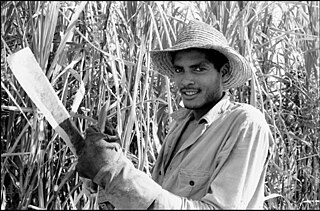 W
WThe zafra is the late summer or early autumn harvest; the term is common in countries with Arabic or Spanish influence.